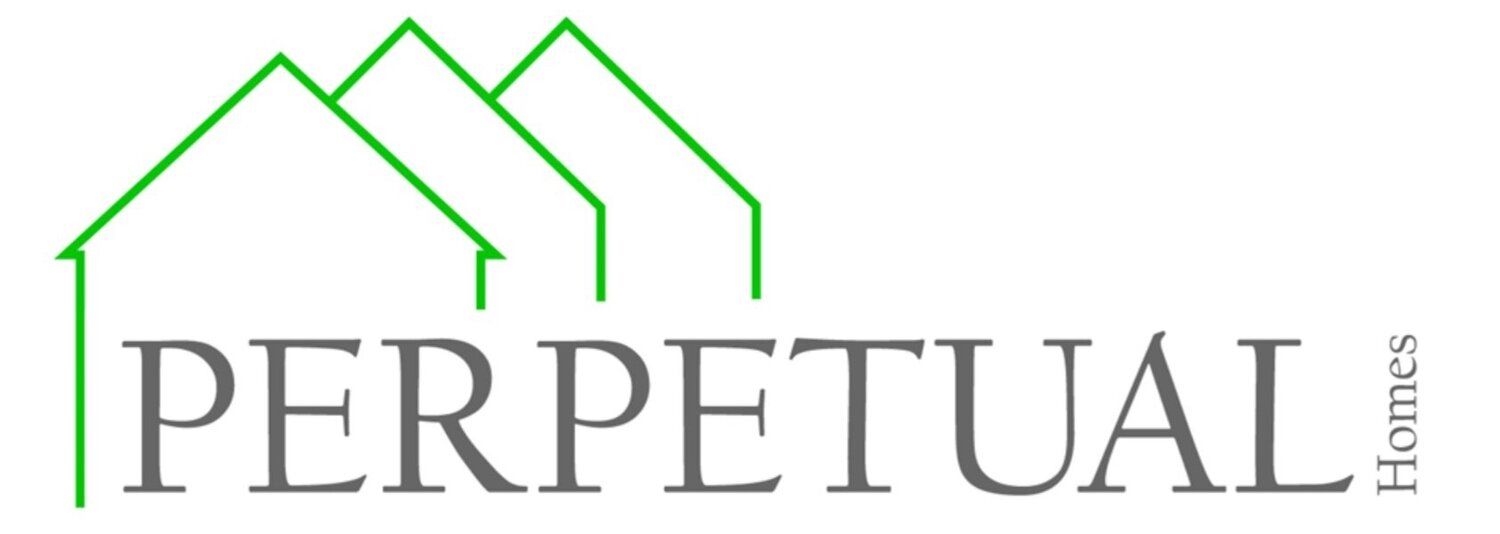Resources
Everything You Need to Build With Confidence
From zoning laws to financing tools, we’ve gathered the most essential resources to help you plan, fund, and complete your ADU or backyard home with clarity. Browse guides, FAQs, and downloadable documents below.

ADU Key Resources
Essential reading for understanding how ADUs work in California and how to get started.
Laws & Legislation
A breakdown of relevant ADU laws in California—with highlights of key changes and what they mean for homeowners.
Preapproved ADU Plans by City or County
Some cities and counties now offer pre-approved ADU designs, making it faster and more affordable for homeowners to add a backyard cottage, garage conversion, or in-law suite.
Policy Highlights
- No minimum lot size for ADUs
- No owner-occupancy requirement (2020–2025 window)
- Detached ADUs up to 800 sq ft can't be denied for setback issues
- Two ADUs on multi-family lots.
- HOA limitations on ADU restrictions
- Fast-tracked approval: 60-day application rule
- Lower developer impact fees/city reviews under 750 sq. ft.
- Dramatically reduced red tape = lower entry costs
Assembly and Senate Bills
ASSEMBLY BILLS
SENATE BILLS
Key Legislation By Year
2021
- SB 8 & SB 9: Allow for the bifurcation of the single-family home and lot
- SB 10: Allows ministerial change to zoning bypassing CEQA
- AB 2011 & SB 6: Allow for housing in commercial corridors currently set aside for offices, retail or parking
- AB 2221: The Planning and Zoning Law, among other things, provides for the creation of accessory dwelling units by local ordinance, or, if a local agency has not adopted an ordinance, by ministerial approval, in accordance with specified standards and conditions
- California Coastal Commission: Updates regarding the implementation of new ADU laws (PDF)
2022
2023
- AB 1033: Allows sale of ADU by condominiumizing the single-family lot
- AB 2221: Changes to the 60-day rule: There will now be greater transparency about the 60-day rule.
- SB 684: Allows ministerial approval for up to 10 units on 5-acre multi-family zoned lots. ADUs can now be built higher than 16 feet, up to a maximum of 25 feet.
- 2023–2024 reforms: Any proposed detached ADU up to 800 sq ft cannot be denied merely for encroaching on the front setback.
- SB 1033: Empowers local governments to allow homeowners to sell ADUs separately from their primary residence by enabling these units to be legally condo‑ized and deeded independently—unlocking new options for wealth-building and affordable housing.
2024
2025
- SB 1211: Streamlines and expands ADU development on multi-family properties by allowing up to eight detached units—so long as they don’t exceed the number of existing units—and by prohibiting local agencies from requiring replacement parking when converting or demolishing garages or uncovered spaces.
ADU Plans by City or County
Alameda County
Types & Quantity
- Standard ADUs: Up to two new detached ADUs and/or converted spaces within existing buildings—even for multifamily properties (e.g., duplexes may add up to one ADU; a 20-unit apartment building could potentially add five ADUs, two of which may be detached).
- Junior ADUs (JADUs): Allowed only in R‑1 zones, within an existing home (≤ 500 sq ft) and combined with at most one detached ADU (800 sq ft max).
Parking requirements
- No extra parking if the ADU is within ½ mile of transit, within a historic district, built inside existing space, street permits are restricted, or there's a car-share nearby.
- For new attached/detached ADUs, one parking spot per unit or per bedroom is required.
Other development rules
- Detached ADUs must be behind the primary dwelling (75 ft from front property line or rear half), unless in agricultural zones.
- Interior access and compatibility with existing building aesthetics are required.
- Rentals must be for ≥ 30 days; cannot sell or separate the ADU from the main residence.
Permitting & fees
- Ministerial (no discretionary review). Requires building permit; additional permits (sewer, fire, grading, etc.) may apply.
- ADUs within existing structures and under 750 sq ft may be exempt from County planning fees; larger ones may incur park dedication and impact fees.
Support & guidance
- The County offers "HelloADU" technical assistance, a detailed guidebook, permitting flowcharts, calculators, and a “Can I Build?” tool for addresses.
Ongoing compliance
- These interim regulations align with State law as of January 2023, pending potential updates.
City of Alameda
Allows:
1. Building a detached ADU,
2. Converting a legal accessory structure,
3. Adding an attached ADU,
4. Converting interior space, and
5. Junior ADUs (≤ 500 sq ft)
On single-family lots: one ADU plus one JADU.
On multifamily lots: attached ADUs up to 25% of existing units (via conversion), plus up to two detached ADUs must have separate permits, kitchen, bathroom, and cannot be used for short‑term rentals.
Other Cities in Alameda:
City of Oakland
- Offers pre‑approved ADU plans (“fast‑track”) that can be used as-is or customized, speeding up approvals.
City of San Leandro
- ADUs permitted across single‑family, duplex, and multifamily residential zones.
- Junior ADUs (<500 sq ft) are allowed if converting interior space; if garage conversion, replacement parking is required.
- Permits are separate; short‑term rentals are not allowed. Staff assistance and guidelines are provided.
| Jurisdiction | # of ADUs Allowed | JADU? | Parking Exemptions | Permitting Type |
|---|---|---|---|---|
| Alameda | <2 detached + conversions | Yes (R-1 only) | Transit, historic zone, etc. | Ministerial, fees apply |
| City of Alameda | 1 ADU + 1 JADU (SF); multifamily: conversion + <2 detached | Yes | Standard | Ministerial |
| City of Oakland | Follows state; fast-track via pre-approved plans | Yes | Not specified | Expedited plans |
| City of San Leandro | SF, duplex, multifamily allowed; JADU <500 sq ft | Repl. parking if garage conversion | Separate permit |
Contra Costa County
Overview & Permit Process
- ADUs require both Planning and Building permits through the ePermits Center; ministerial review only (no discretionary review).
- Pre‑approved (PADU) plans are available to streamline the process, but still need site‑specific review.
- No ADUs permitted for short‑term rentals.
Unit Types & Size Limits
- JADUs: ≤ 500 sq ft, inside single‑family homes or garages.
- Attached ADUs: Either within existing footprint (converted attic, garage) or as additions.
- Fire‑rated separation required.
- Detached ADUs:
○ ≤ 800 sq ft and ≤ 16 ft height = streamlined, no parking required
○ Larger/new ones allowed with full review. - Under California law: detached ADUs up to 1,200 sq ft allowed; Contra Costa currently caps at ~1,000–1,200 sq ft depending on zone. On lots <10,000 sq ft, max ADU size is 640 sq ft; larger lots allow up to 1,000 sq ft.
Parking & Setbacks
- No parking required for ADUs ≤ 800 sq ft or near transit, historic districts, or when replacing garage spaces.
- Detached ADUs typically require 4 ft side/rear setbacks.
Fees & Impact
- Standard building fees apply; significant impact fees (e.g. sewer, traffic, park) can sum to ~$50k unless the unit lacks a kitchen.
Legal Updates
- The County recently amended its ADU ordinance (Ordinance 2025‑07, adopted May 13, 2025) to align with new state law—now allows more ADUs per lot, broader parking exemptions, and removes subjective standards.
- However, in Dec 2024, California HCD found the 2023 ordinance non‑compliant on points like combinations of ADUs/JADUs, objective standards, and parking – the 2025 amendment should address these .
Cities & Towns in Contra Costa County
Many cities have their own ADU handouts and ordinance details:
- Concord: Offers pre‑approved ADU plans since April 2023. See city guidelines
- Oakley: Pre‑approved plans implemented in October 2021
- Walnut Creek: ADU rebate program—up to $7,500 (market‐rate units) or $15,000 (low‑income)
Multi‑family properties county‑wide may add:
- 1 attached conversion per 4 units, or Up to 2 detached per property; detached height typically ≤ 16 ft (or 18 ft near transit)
Additional cities with ADU materials (via East Bay compilation) include:
- Danville,
Dublin
(forthcoming),
Hayward,
Lafayette,
Martinez,
Moraga,
Pleasant Hill,
San Ramon,
Orinda, etc.
| Jurisdiction | Max ADU Size | # ADUs Allowed | Parking | Fees & Rebates |
|---|---|---|---|---|
| County (Unincorp.) | 800–1,200 sq ft | 1 detached + JADU + attached conversions | Exemptions near transit/garage | Can reach ~$50K; streamlined via PADUs |
| Concord | State limits | 1 ADU + 1 JADU; PADU program | Follows state law | Standard city permits |
| Oakley | State limits | PADU program | Follows state law | Standard city permits |
| Walnut Creek | State limits | Standard allowances | Follows state law | Rebates up to $15K |
| Multi-family statewide | 800 sq ft | 1 attached/4 units or 2 detached per lot | Parking per bedroom; exemptions | N/A |
Santa Clara County
Permitted Units
- You may build one ADU and one JADU on a lot with an existing or proposed single‑family home—or duplex—for up to 800 sq ft and 16 ft tall; larger allowed via standard review.
Type & Size
- JADU: ≤ 500 sq ft, efficiency kitchen, separate entrance, can share bathroom.
- ADU: attached, detached, or conversion from existing structures.
Setbacks & Height
- ≥4 ft from side/rear property lines; ≤16 ft high without special review; front yard placement allowed if necessary.
Parking
- No new parking if: ADU ≤ 800 sq ft, near transit, in historic district, street permits restricted, or built with a new single‑family home; JADUs always exempt.
Approval & Pre‑Approved Plans
- Ministerial permitting via planning and building departments; Pre‑Approved ADU.
- (PADU) plan templates available for fast‑track review.
City of Santa Clara
- ADU: 220–1,200 sq ft; submit via Building Permit (except second-story attached after 2/8/24).
- Detached ADUs: ≤ 1,200 sq ft; ≤ 1,000 sq ft on lots <5,500 sq ft; height ≤ 25 ft (18 ft single‑story).
- Attached ADUs: ≤ 1,000 sq ft or 50% of existing home.
- Setbacks: 4 ft side/rear; 6 ft from main structure; half‑story requires 15 ft rear
- Parking: Not required, even if demolishing garage.
- One ADU + one JADU per single‑family lot. Multi‑family: up to 8 detached ADUs + conversions equaling ≤ 25% of units.
City of Santa Clara
Cities (Campbell, Cupertino, Gilroy, Los Altos, Los Altos Hills, Los Gatos, Milpitas, Monte Sereno, Morgan Hill, Mountain View, Palo Alto, San Jose, Saratoga, Sunnyvale).
- All participate in Santa Clara County ADU Collaborative providing guidebooks, calculators, PADU options, and personalized local rules
- Generally align with county: 1 ADU + 1 JADU per single‑family lot, similar size, setback, height, and parking exemptions.
- City of San Jose has its own PADU fast‑track program since 2019; ~1,400 built in past 5 years
| Jurisdiction | Units Allowed | Size Limits | Setbacks/Height | Parking | Fast‑Track Options |
|---|---|---|---|---|---|
| County (Unincorp.) | 1 ADU + 1 JADU | ADU ≤ 800 sq ft/16 ft; larger via review | ≥4 ft from side/rear | Exemptio ns common | PADU available |
| Santa Clara (city) | 1 ADU + 1 JADU; MF: up to 8 ADUs | Detached ≤ 1,000–1,20 0 sq ft; attached ≤ 1,000 sq ft | 4 ft side/rear; half‑story 15 ft rear | Not required | PADU & building permit load-in |
| Other cities/towns | Same statewide min. | State min. 800 sq ft / city max varies | Similar setbacks | Similar exemptio ns | Collaborative & PADU across region; San Jose fast-track |
Sonoma County
Overview & Recent Updates
- Sonoma County’s ADU rules are aligned with California’s state laws effective Jan 1, 2025—State law prevails where local code hasn’t caught up yet The county allows up to 8 detached ADUs on a multifamily lot per Government Code.
Permitting
- All ADUs and JADUs are now processed ministerially via the Building Permit (no separate zoning permit) within 60 days.
- ADU Ready pre-reviewed plan program offers faster permit issuance (30‑day zoning review, then full building permit).
Types & Size Limits
- JADU: ≤ 500 sq ft, inside existing structure.
- ADU: attached, detached, conversion, or combo. Maximum generally 1,200 sq ft
- Multifamily lots: can add one ADU or conversions totaling up to 25% of existing units, or up to two detached (≤ 1,200 sq ft, 16 ft height, 4 ft setbacks)
Setbacks & Height
- Side/rear setbacks: 4 ft minimum; front yard per base zoning unless it blocks 800 sq ft unit Height: detached ≤ 18 ft; attached per base zoning limit.
Parking
- ADUs ≤ 750–800 sq ft exempt from parking; some impact fee waivers apply
- JADUs are always exempt
Fees & Requirements
- ADUs < 750 sq ft: exempt from park and traffic impact fees; above that, fees scale with size; school fees apply for > 500 sq ft.
- Utility connection proof required; well/septic requirements apply
Sonoma City
Santa Rosa
- ADUs allowed in single- and multi-family zones; JADUs permitted with deed restriction Detached ADU max 1,200 sq ft, height ≤ 18 ft; setbacks: 4 ft sides/rear, 10 ft front (with allowances).
- Parking: 1 space required for detached ADU, but waived if ≤ 750 sq ft, interior conversion, within historic district, near transit.
- Fees: 0 % up to 750 sq ft; 25 % at 751–950 sq ft; 50 % at 951–1,200 sq ft impact fee scale; other school/utility fees apply .
Sonoma (City)
- Detached ADU max 850 sq ft or 50 % of main dwelling if >650 sq ft; attached up to 30 % of existing dwelling; JADU ≤ 500 sq ft .
- Habitable rooms minimum dims: 7 ft; units need kitchen, sanitation, separate entrance; short‑term rentals prohibited (< 30 days)
- Height per zone; detached single-story accessory limit applies; sprinklers required for >1,200 sq ft or taller units
Healdsburg
- Max ADU size increased from 850 sq ft to 1,200 sq ft; lot coverage cap removed for ADUs ≤ 850 sq ft
| Jurisdiction | ADU Types Allowed | Max ADU Size | Setbacks | Parking | Permitting |
|---|---|---|---|---|---|
| County (Uninc.) | ADU + JADU; multifamily additions | 1,200 sq ft | 4 ft side/rear; front per zoning | ≤ 750–800 sq ft exempt | Ministerial; PADU program |
| Santa Rosa A | ADU + JADU | 1,200 sq ft | 4 ft side/rear; 10 ft front | 1 space (waivable) | Ministerial; building + planning |
| Sonoma (City) | ADU + JADU | 850 sq ft detached; JADU ≤ 500 | Zoning-spe cific | Follows state/exemption s | Ministerial; building permit |
| Healdsburg | ADU + JADU | 1,200 sq ft | 4 ft side/rear | Likely state exemptions | State-aligned |
Monterey County
Permitting Process
- ADUs and JADUs are permitted ministerially under Title 21.64; coastal-zone units may require a Coastal Administrative Permit.
- The county offers pre-approved ADU plans (e.g., Santa Lucia Modern, Ventana Ranch) to simplify review.
Unit Types & Quantity
- Single-family lots: up to 1 detached ADU (≤ 16 ft tall with 4 ft setbacks) plus a JADU, or conversion of existing structures .
Size, Setbacks & Height
- Detached: 4 ft side/rear setback; ≤ 16 ft high (coastal may differ).
- No minimum lot size due to AB 881; conversions exempt from setbacks beyond fire safety.
Parking
- Conversions & JADUs: no parking required.
- New ADUs: 1 space/unit or per bedroom, unless exempt under state law (if ≤ 800 sq ft, near transit, historic, replacing garage, etc.)
Fees & Utility Connections
- ADUs < 750 sq ft waived from impact fees; larger units incur proportionate fees.
- Conversions/JADUs may be exempt from new connections.
- Water permit via the Monterey Peninsula Water Management District for coastal areas.
City of Monterey
Enacted Ordinance 3641 (Dec 2, 2021), Chapter 38‑112.6 governs ADUs/JADUs
Unit Allowance:
- Single-family: one new detached ADU (≤ 800 sq ft, 16 ft height, 4 ft setbacks) plus one JADU, or conversions
- Multifamily: one attached conversion or up to two detached ADUs OR conversions up to 25% of existing units .
Size Limits:
- Attached/detached: ≤ 850 sq ft for studio/1‑bed; ≤ 1,000 sq ft for ≥2‑beds .
Setbacks & Height:
- Conversions: no setbacks if existing; new units require 4 ft side/rear. Detached height ≤ 16 ft (≤ 18 ft within ½ mile of transit)
Parking:
- One space per unit/bedroom required, with exemptions (e.g. if ≤ 800 sq ft, within transit, historic, replacing garage, street permit area).
Design & Utility Requirements:
- Must match primary home's finishes, separate entrance, record covenant against short‑term rental, meet water/sewer adequacy
Review Timeline:
- Ministerial—approval/denial within 60 days of complete application
Other Cities and & Towns
Monterey County’s 12 other municipalities (e.g., Carmel-by-the-Sea, Del Rey Oaks, Pacific Grove, Salinas, Seaside, Soledad, Sand City, Marina, Gonzales, King City) all conform to state minimum ADU/JADU standards. Many offer:
- Pre‑approved plan options,
- Parking and fee exemptions,
- Ministerial permit processes,
- Covenants to restrict short-term rentals.
| Jurisdiction | Units Allowed | Max Size | Setbacks/Heigh t | Parking | Fees & Permitting |
|---|---|---|---|---|---|
| County (Uninc.) | 1 detached + JADU or conversions | ≤ 16 ft height | 4 ft side/rear; coastal overrides | 1 / unit-bedroo m, exemptions apply | Ministerial; pre-approved plans; fee waivers |
| Monterey (city) | 1 detached + 1 JADU or conversions; MF: attached or 2 detached or conversions | 850–1,00 0 sq ft | Similar; transit may allow 18 ft | 1/unit-bedro om; exemptions follow state law | Ministerial within 60 days; utility proof, covenant required |
| Other Cities | State min: 1 ADU + 1 JADU (SF); MF up to 25% units or 2 detached | Up to 1,200 sq ft per state | 4 ft side/rear; city-specific rules | Similar exemptions | Ministerial; some offer PADUs, check coastal overlap |
Napa County
Unit Types & Quantity
- Allows one ADU (attached, detached, or conversion) and one JADU on lots with single‑family or multifamily dwellings; also follows state allowances for multifamily lots
Size, Setbacks & Height
- State baseline: up to 1,200 sq ft, 16 ft height, 4 ft side/rear setbacks
- Attached ADUs capped at 50% of the primary home’s size; JADUs ≤ 500 sq ft
Parking & Fees
- One parking space required per ADU except if ≤ 800 sq ft, conversions/JADUs, near transit, in historic districts, part of an existing structure, etc.
- Impact and building fees apply proportionally; units under 750 sq ft may waive fees.
- County runs an Affordable ADU Forgivable Loan program (up to $10,000 for fees, plus funds for plans and escrow)
Permitting Process
- Ministerial building permits; pre-approved plan options supported via Napa Sonoma ADU and county websites
Compliance Review
- The County adopted Ordinance No. 1495 in Sept 2024, but the state HCD issued a non‑compliance letter in Feb 2025 regarding multifamily ADU counts, deed restriction limits, and parking exemptions. They must respond by March 20, 2025
City of Napa
Unit Types & Limits
- Permits one ADU per residential lot, plus one JADU on single‑family lots; multifamily sites also allowed under state §66352.2(e)
Size, Setbacks & Height
- ADUs up to 1,200 sq ft; JADUs ≤ 500 sq ft.
- Detached ADUs must be ≥ 4 ft from side/rear; attached ADUs follow main dwelling zoning setbacks; height ≤ 16 ft (higher possible with admin permit).
Parking
- One parking space per ADU, but waivers apply if: ≤ 800 sq ft, conversions/JADUs, near transit, in a historic district, street‑permit zones, or one block from car‑share
Process & Resources
- Offers a Standard Plans Program with pre‑approved modular/site-built designs for faster permits.
- Homeowner guide indicates building permits processed within ~21 business days, with follow‑up comments in ~14 days.
Design & Legal Requirements
- Must include a kitchen and separate entrance; ADUs prohibited from short‑term rentals; JADUs require owner‑occupancy and recorded deed restriction
| Jurisdiction | Units Allowed | Max Size | Setbacks/Heigh t | Parking | Fees & Permitting |
|---|---|---|---|---|---|
| County (Uninc.) | 1 ADU + 1 JADU | Up to 1,200 sq ft | 4 ft side/rear; 16 ft height | 1 space/unit unless exempt | Ministerial, pre‑approved plans, forgivable loans up to ~$10K |
| City of Napa | 1 ADU + JADU (SF lots) | ADU ≤ 1,200 sq ft; JADU ≤ 500 sq ft | Similar; admin permit for >16 ft | 1 space unless exempt | Standard Plans Program, 21/14‑day review, deed restrictions for JADUs |
Marin County
Overview & Types
- One ADU (detached, attached, or conversion) plus one JADU allowed per lot, aligned with state law. Ministerially approved under County Code §22.32.120
- JADU ≤ 500 sq ft, inside primary dwelling
Size, Height & Setbacks
- Detached ADUs: up to 850 sq ft (1-bed) or 1,000 sq ft (2+-beds); height max 16 ft; 4 ft side/rear setbacks; 6 ft from existing structures
- Attached ADUs: ≤ 50% of main dwelling
Parking & Design
- One parking space required unless exemptions apply (≤ 800 sq ft, within transit/historic zones, part of main or accessory structure, restricted street permits)
Permitting & Fees
- Ministerial review aims for resolution within 60 days. Coastal-zone ADUs may require Coastal Permits and Commission review County offers pre-approved plan sets, fee waivers or reductions extended through 2026
Compliance Notes
- HCD (July 2023) flagged code inconsistencies with state law—these are being refined
City of Marin
Marin Cities & Towns (via ADUMarin partnership: Belvedere, Corte Madera, Fairfax, Larkspur, Mill Valley, Novato, Ross, San Anselmo, San Rafael, Sausalito, Tiburon)
- Shared Toolkit: All jurisdictions participate in ADUMarin, which offers a workbook, calculator, “off-the-shelf” ADU plans, inspirational stories, and feasibility tools
- Most follow state minimums: ADUs ≤ 1,200 sq ft, JADUs ≤ 500 sq ft, 4 ft side/rear setbacks, ministerial approval within 60 days. Coastal or historic overlays may add minor stipulations.
- Pre-approved modular and design-reviewed plan options reduce cost and timeline.
San Rafael
- JADUs ≤ 500 sq ft; ADUs include attached/detached/conversion types
- Attached ADUs ≤ 1,000 sq ft or 50% of the home; detached ≤ 1,000 sq ft; conversions have no size limit
Setbacks: 4 ft side/rear; front yard matches primary but must allow 800 sq ft unit
- Height: Detached up to 16 ft (18 ft near transit or on multifamily sites); attached ≤ 25 ft or follow base zoning
Parking: One space per unit unless exemption conditions met
- Pre-approved plans available; ministerial permit; no short‑term rentals allowed
| Jurisdiction | Units Allowed | Max Size & Height | Setbacks | Parking | Permitting | Incentives & Tools |
|---|---|---|---|---|---|---|
| County (Uninc.) | 1 ADU + 1 JADU | ADU ≤ 850–1,000 sq ft; 16 ft height | 4 ft side/rear; 6 ft from existing | 1 space/unit unless exempt | Ministerial ± Coastal Permit; 60 days | Pre-approved plans; fee waivers to 2026 |
| Marin Cities/Towns | 1 ADU + 1 JADU | ADU ≤ 1,200 sq ft; JADU ≤ 500 sq ft; height per local zoning | 4 ft side/rear; front per zoning | 1 spot, exemption s apply | Ministerial; ~60 days | ADUMarin toolkit; plan gallery |
| San Rafael | ADU/JAD U formats | ADU ≤ 1,000 sq ft; height 16–25 ft | 4 ft side/rear; zoning front | 1 spot, exemption s apply | Ministerial; pre‑approve d plans | ADU Plan Gallery via ADUMarin |
San Mateo County
Units Allowed
- One ADU (attached, detached, or conversion) plus one JADU allowed per lot with a primary residence, including multifamily properties.
Size & Height
- Detached ADU: up to 800 sq ft or 35% of the main house (whichever is larger), max 1,500 sq ft; attached ADU similar caps; JADU ≤ 500 sq ft.
Setbacks
- Side/rear setbacks: 4 ft; front setbacks per underlying zone; conversions may need no new setbacks.
Height
- Detached ADU: county allows up to 26 ft; state baseline is 16 ft
Parking
- Conversions and JADUs: no parking required; new ADUs require 1 space unless eligible for exemption (e.g., ≤ 800 sq ft, near transit, in historic zone).
Permit Process
- Ministerial review (no discretionary hearings); coastal zone may need additional coastal permit. Local planning chapter split coastal & inland regs in 2020 updates.
Support & Resources
- ADU Resource Center offers guidebooks, calculators, step‑by‑step suppor.
City of San Mateo
Units Allowed
- One ADU or one JADU per parcel—owner must record deed restriction; no short-term rentals (< 30 days).
Size & Height
- Attached: up to 24 ft to plate line, 32 ft to peak; detached ADU: 16 ft plate / 24ft.
Peak Setbacks
- Side and rear: 4 ft; front per zoning; conversions exempt from new setbacks
Parking
- Required unless exemptions apply (≤ 800 sq ft, transit proximity, garage replacement, etc.)
Facilities & Process
- ADUs need separate entrance, full living facilities; JADUs inside main home can share bathroom.
- Ministerial building permits; discretionary not needed for JADUs.
| Jurisdiction | Jurisdiction | Units Allowed | Max Size & Height | Setbacks | Parking | Permitting | Resources |
|---|---|---|---|---|---|---|---|
| County (Uninc.) | County (Uninc.) | 1 ADU + 1 JADU | ADU ≤ 800 sq ft or 35% main house, up to 1,500 sq ft; JADU ≤ 500 sq ft; detached ADU up to 26 ft height | 4 ft side/rear; 6 ft from existing | 1 space unless exempt | Ministerial; coastal review if needed | ADU Resource Center guidebook |
| City of San Mateo | City of San Mateo | 1 ADU or 1 JADU | Attached max 24 ft/32 ft; detached 16 ft/24 ft | 4 ft side/rear; front per zone; conversion s exempt | 1 space unless exempt | Ministerial building permit; deed restriction for JADU | City ADU webpage, FAQ |









